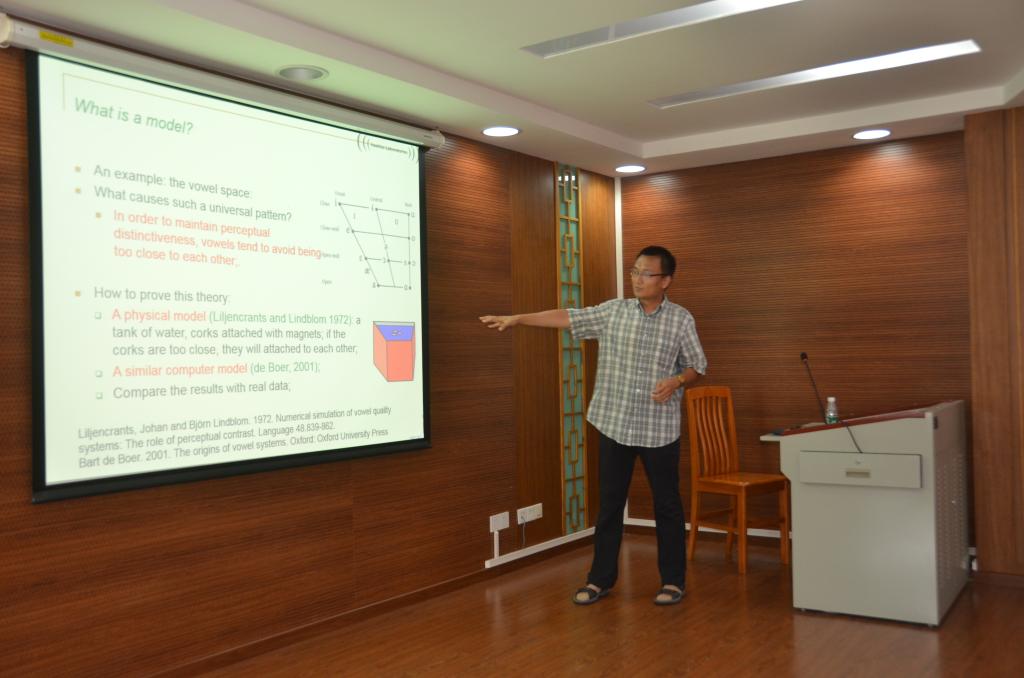Onthe morning of September 26th, 2017, Dr. GONG Tao, who is from the famousHaskins Laboratories, Yale University, gave the audience anotherenlightening lecture on the computer simulation of language evolution.
Thelecture mainly covered three parts: the function of a model and the applicationof computers in building up a model, general steps of building up a computersimulation and three typical examples of simulation, and classifications ofcurrent models and advantages and limitations of computer simulation. In the firstpart, Dr. Gong briefly explained that a model was useful to predict the complexsystems. It is an understanding-by-building process in which computers serve asa powerful tool in areas like word counting, pattern extraction, spectrogramand stimuli display. The notion of computer simulation indicates operationalhypotheses that are expressed in computer programs, withthe aim of exemplifying, evaluating, exploring existing evolutionary theories,and predicting and proposing new theories. Dr. Gong then used two examples—asimulation of innate alarm call and a simulation of human lexicalcommunication—to further illustrate their applications in the Meaning-UtteranceMapping Matrix.
In thesecond part, five major steps of building up a computer simulation were firstpresented, consisting of research questions, artificial language, linguisticknowledge, learning mechanisms, communication and simulation results analyses.Based on M-U Mappings, detailed examples and explanations were offered in eachof the steps for better understanding. After that, the focus switched ontothree well-developed models of computer simulation. One was called the“Language Change Model”, which tried to explore the influence of socialstructure on diffusion of language change based on the calculation of frequencyand functional value of changed and unchanged linguistic forms. The secondmodel was “Category Game”, which tried to answer the question whether generalcategorization ability would lead to linguistic categories by measuring andcalculating how agents discriminated stimuli from a continuous perceptual space.The third model “Iterated Learning”, by inducing a simple grammar to cover theheard M-U mappings pairs, found that compositionality could emerge out ofholistic signaling system in a glossogenetic timescale.
For the third part, Dr. Gong generally mentionedthat the current models could be classified based on each of the following fourdimensions—the purpose, the approaches, the simulated language or thesituateness, and structuralness. He pointed out that a computer model couldequip artificialindividuals with the arbitrary behaviors, manipulate the incorporated factors, andhelp to transform developmental theories from a descriptive science into anexplanatory science. However, the limitation of a model lied in that it couldnot prove whether its assumptions was empirically valid or not.
The whole lecture,which could be described as advanced in research methods, informative incontent and systematic in presentation, was highly appreciated by theparticipants and ended in warm applause.

